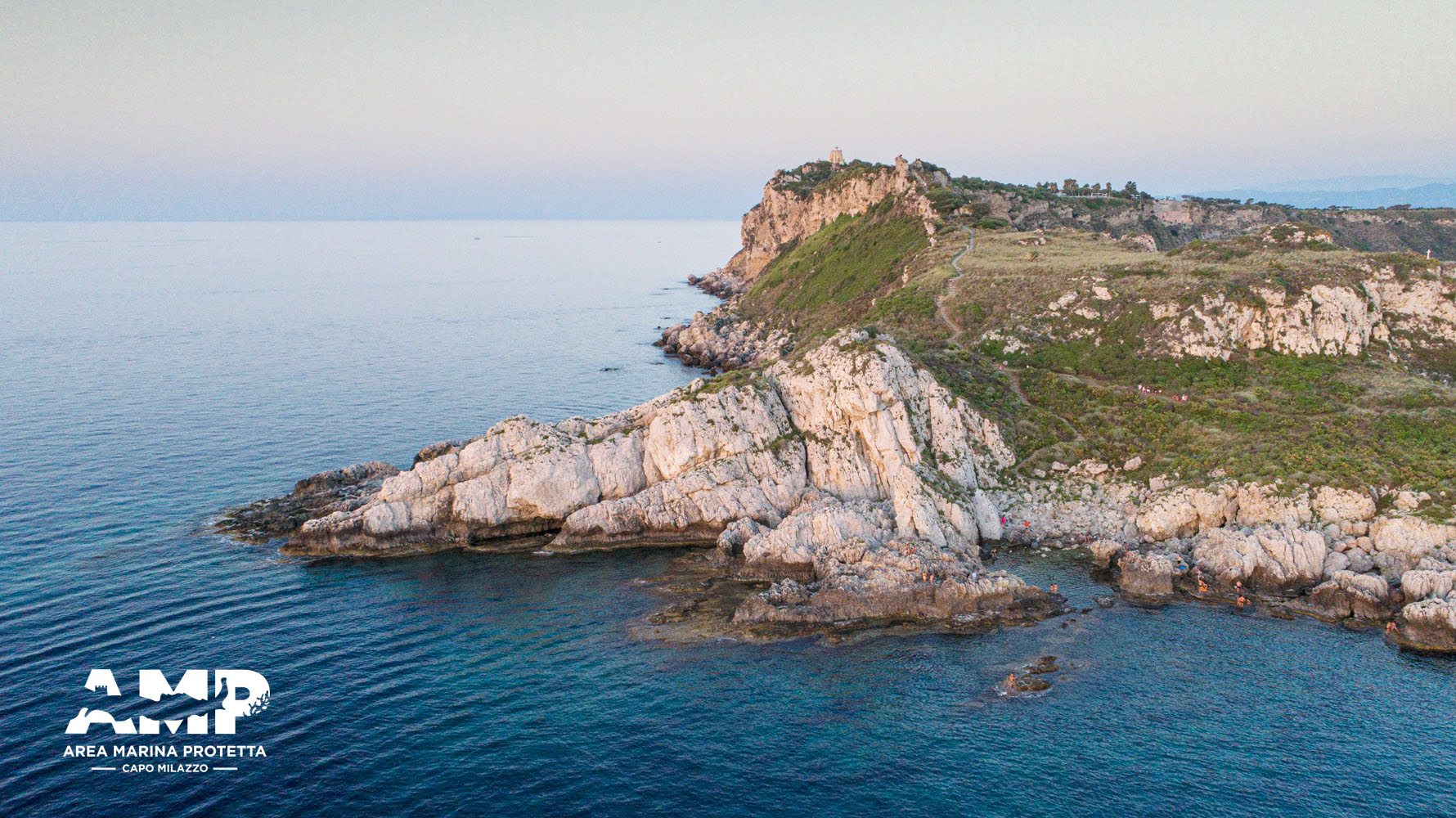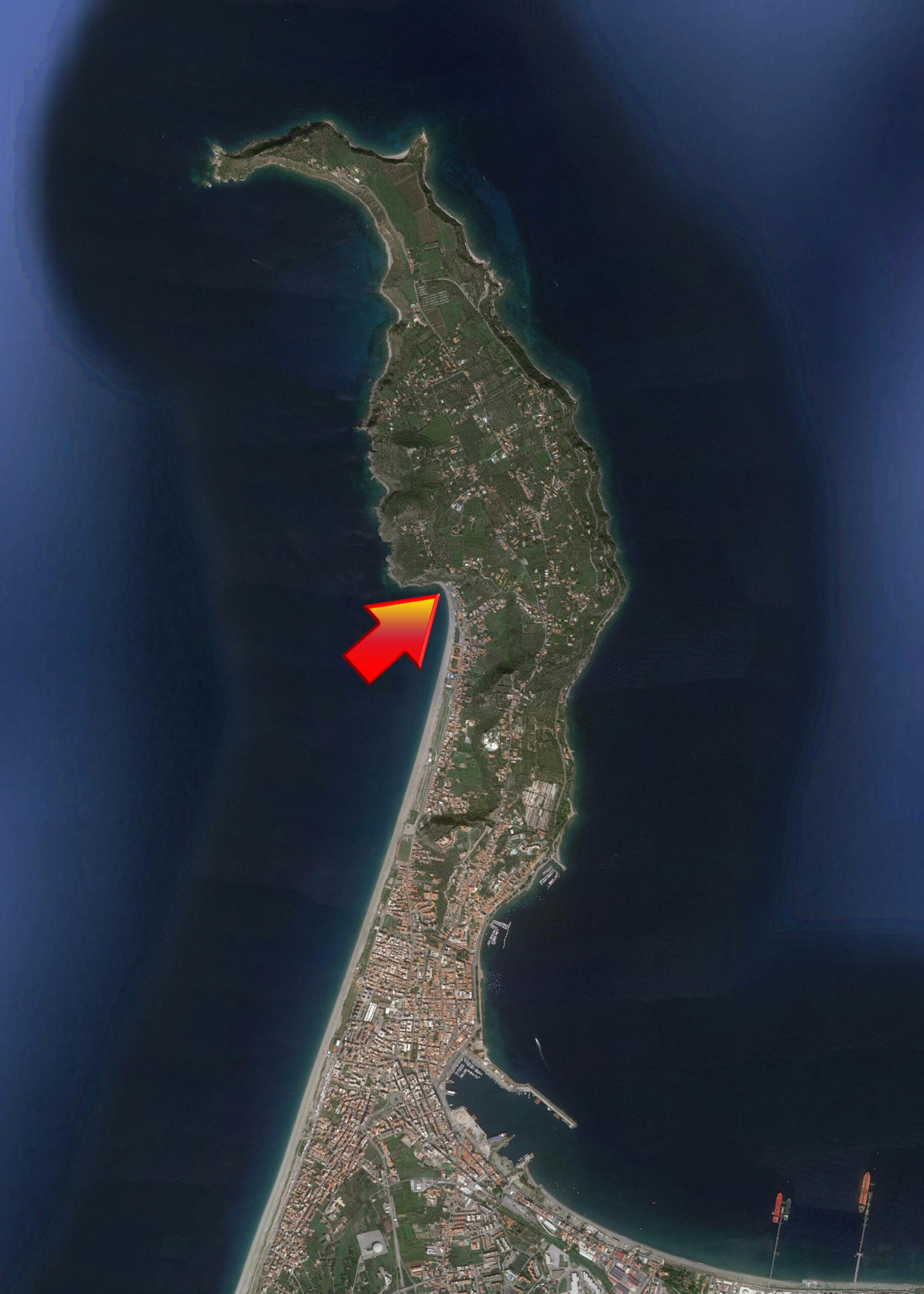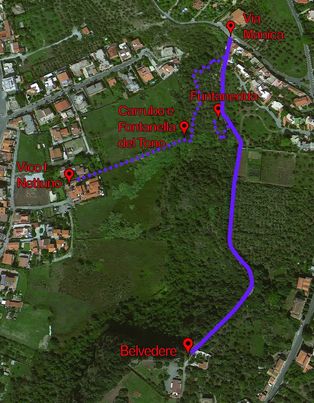Trail length:
up to Belvedere 500 m (up to the carob tree 200 m)
Length of trail:
up to Belvedere 20 min (up to the carob tree 15 min)
Level of difficulty:
up to Belvedere easy (up to carob tree medium)



Trail length:
up to Belvedere 500 m (up to the carob tree 200 m)
Length of trail:
up to Belvedere 20 min (up to the carob tree 15 min)
Level of difficulty:
up to Belvedere easy (up to carob tree medium)
Just about fifty metres after turning onto Via Manica, we find a downhill lane on the left that narrows steadily until it becomes a beaten earth path. This is a very interesting path, because it connects Via Manica with the 'Belvedere' viewpoint. The name does not betray expectations; in fact, at this point, some 50 metres above sea level, the view opens out over the Tono and its splendid sea. And it is precisely in order to reach the Tono tuna fishery that the Capitian tuna fishermen used to use another small path leading down to the sea.
It is accessed via a diversion on the right at the beginning of the main path and continues along a descent that leads to a spring popularly known as 'a funtanedda du Tonu', from Piaggia called 'piediguddi'. In a 17th-century map, it is indicated as 'Fuente del angonia manantial de bastante agua y buena'. Right in front of this spring is 'a carrubbara', a centuries-old carob tree (Ceratonia siliqua). This specimen is of extraordinary biological importance for Milazzo; it was 'rediscovered' in 2003 thanks to the path cleaning operation during the environmental volunteer camps organised by Legambiente del Tirreno. In 2006, Prof. Giuseppe Giaimi, from the University of Palermo, carried out studies on the carob tree, which he dated between 1650 and 1700.
According to him, since the mother plant was felled, today we find a stump with a circumference of 9.3 metres, from which three suckers originated, with a height of around 14.5 metres. On that occasion, the Professor assayed the health of the plant by means of cores and other specific investigations.
The path continues along a cane thicket that ends at vico I Nettuno, which in turn leads into Via Nettuno al Tono. But let us return to the beginning of the main path, the one 'from the Manica to Belvedere'. The path runs along dry stone walls that follow the path to the left for its entire length; thanks to these, it is still possible to breathe in an ancient atmosphere. Above these low walls, popularly called 'ammacìi', are prickly pear plants, which stabilise the structure and act as vegetal barriers between the properties.
About halfway along the path we find a small rivulet of water; this is why the vegetation of the area is characterised by the presence of many specimens of Canna domestica, which follow the impluvium to the plant below. Continuing forward along the path, we find a diversion on the right that leads to the 'funtanedda' and some old wash-houses, inside which it is possible to see water gushing out of the wall. There is also a tank full of water enclosed by wooden boards. The wash houses are in the shade of a beautiful specimen of field elm. In fact, this path is none other than the continuation of the one that proceeds from Monte Trino to the Manica (the 'Ufennu e u paradiso' path); in fact, the section of the Manica that we now find paved joins the two paths: the entire route was therefore an ancient mule track that from Monte Trino allowed one to reach Belvedere while remaining on the edge of the Promontory's western coastline.
Isgrò C. Guida alla natura di Capo Milazzo, Milazzo 2016